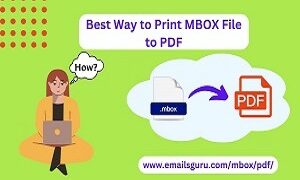Solar for Business: Upfront Costs, Long-Term Benefits, ROI
Thousands of business owners across the U.S. are dealing with increasing utility rates and unpredictable energy costs. Installing a solar power system for business isn’t just about saving the planet—it’s about controlling costs, gaining independence from volatile rates, and unlocking huge financial incentives.
But here’s the catch—these tax benefits of solar panels won’t last forever. And with rule changes looming, it pays to act now.
What Does a Solar Power System for Business Really Cost?
The upfront cost is the first thing every business owner asks about—and for good reason. Installing a commercial solar system can cost anywhere between $100,000 to $1 million, depending on system size, roof structure, and energy needs.
That sounds like a lot. But let’s break it down.
Here’s what typically makes up the cost:
- Equipment (panels, inverters, wiring)
- Labor and installation
- Permits and inspections
- System design and engineering
However, thanks to federal tax incentives, the true net cost is much lower.
Tax Benefits of Solar Panels for Businesses
This is where things get interesting—and where you start to win. The federal government offers two major incentives:
Investment Tax Credit (ITC)
- Reduces up to 30% of your system’s total cost
- Claimed the year your system is placed in service
- A dollar-for-dollar credit—not a deduction
- Available for both owned and financed systems
Production Tax Credit (PTC)
- Based on how much electricity your system generates
- Paid out over 10 years
- Typically used for large-scale projects
What is the difference between the Investment Tax Credit (ITC) and the Production Tax Credit (PTC)?
The ITC gives you an immediate return by cutting your tax bill right after installation. The PTC, on the other hand, pays you a fixed amount per kilowatt-hour of energy your system produces, rewarding long-term output. Most businesses choose the ITC because of the faster, bigger short-term benefit.
Additional Federal Incentives That Stack Up
Still wondering how the savings add up? Look at these extras:
- Bonus depreciation: Businesses can deduct up to 40% of the system’s cost in the first year alone (2025 rate).
- Accelerated depreciation: Spread over five years, reducing taxable income.
- Transferable credits: Can’t use the ITC fully this year? Sell your credits to another business.
- Carryback and carryforward: Unused credits can go back 3 years or forward 22 years.
Here’s a quick example:
A system with a $1,000,000 tax basis installed in 2025 could bring:
- $300,000 from the 30% ITC
- $92,820 from depreciation benefits
Total tax benefit: $392,820
Long-Term Benefits That Pay You Back
Yes, solar pays off—and faster than most expect.
Here’s how your business wins:
- Immediate savings on monthly utility bills—typically 50–75% reduction
- Energy independence protects you from future rate hikes
- Higher property value—buyers value lower operational costs
- Positive brand image—sustainability matters to today’s customers
- Low maintenance—solar systems typically last 25–30 years
Most businesses see payback in 5–7 years and enjoy 15–20+ years of free power after that.
Real Results You Can Count On
Businesses just like yours have already taken the leap. Here’s what they report:
- 📉 30–50% drop in annual energy costs
- ⚡ Return on investment (ROI) within 6 years
- 🏭 $200K+ in lifetime tax benefits
- 🌎 Major environmental impact with zero emissions energy
Act Before Rules Change and Benefits Shrink
Starting in 2025, the Direct Pay option and credit percentages start phasing down. Waiting could mean missing out on thousands in incentives.
And if your business is in construction planning now, keep in mind:
- To qualify for full credits, you must start construction before the phase-out
- Delays could result in penalties or reduced benefits
- Projects must meet specific domestic content rules to secure full credits
Ready To Avail Long-Term Solar Benefits And Have Energy Freedom?
Installing a solar power system for business isn’t just a smart financial move—it’s time-sensitive. With the tax benefits of solar panels beginning to phase down after 2025 and construction deadlines affecting eligibility, acting now could mean the difference between significant savings and missed opportunities.
Let our team help you evaluate your building, estimate your long-term ROI, and guide you through the available incentives, including the Investment Tax Credit and bonus depreciation options.
Don’t let rising energy bills and changing tax rules set you back. Contact us today to get a tailored solar estimate for your business and take the first step toward lasting energy savings.


























